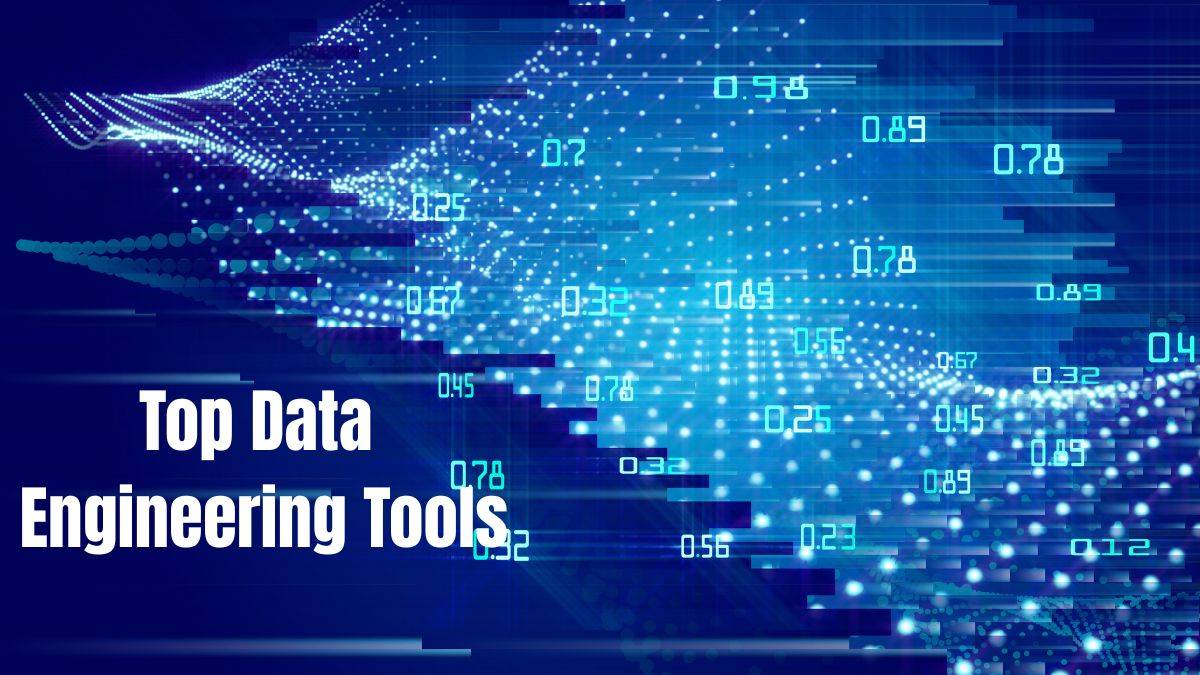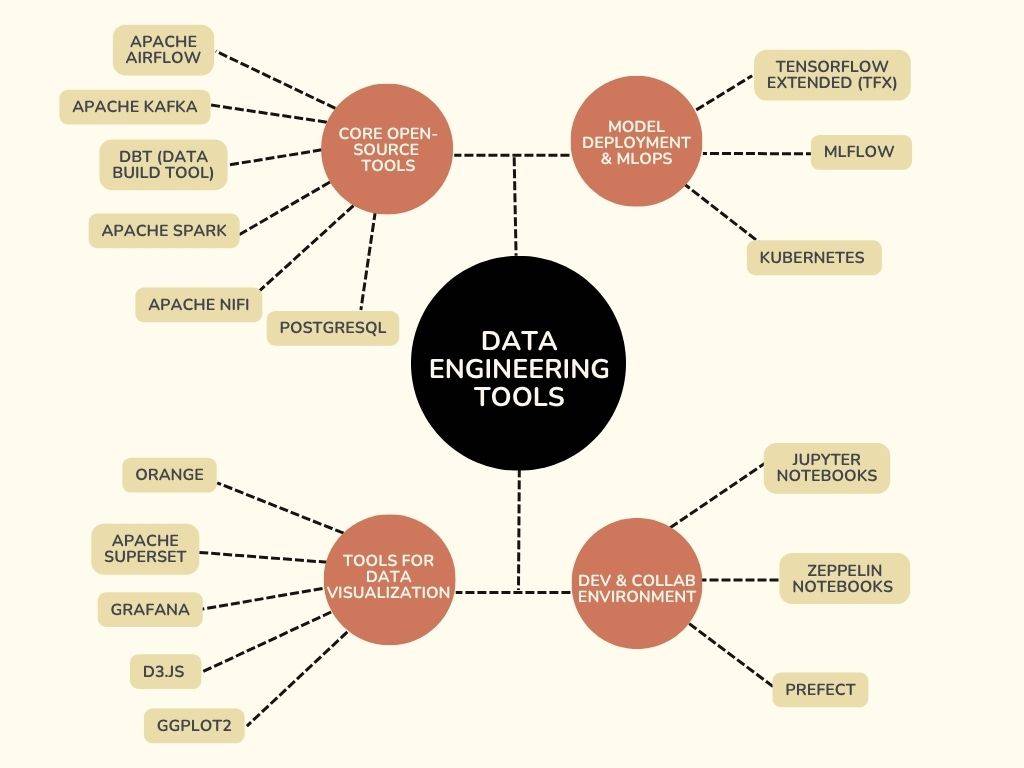Top Data Engineering Tools to Learn in 2026
Data engineering is a booming discipline, both because of the professional opportunities it offers and how it allows businesses to leverage data for competitive advantage. The Market Data Forecast predicts that the global big data and data engineering services market size will be worth US$325.01 billion by 2033, up from US$88.85 billion in 2025, marking a CAGR of 17.6%.
Undoubtedly, there is no better time than now to build a career in data engineering. An excellent way to start is by specializing in the use of key data engineering tools. In this write-up, we have covered the most essential data engineering tools you must master.
You don't need to learn all these data engineering tools at once; ideally, you should familiarize yourself with as many as possible and gain practical experience with at least one or two, applying them to different projects.
The importance of data engineering tools for handling and engineering data is crucial for the following reasons:
- Efficient data management. They enable efficient management of large volumes of data, from acquisition and storage to processing and analysis.
- Process automation: They facilitate the automation of repetitive processes, saving time and reducing errors in data operations.
- Scalability: They offer solutions that adapt easily to changes in data volumes and business needs.
- Data integration: It allows you to integrate data from various sources and formats, providing a unified, complete view of the information.
- Informed decision-making. They facilitate data analysis and visualization, helping organizations make more informed, data-driven decisions.
- Top Data Engineering Tools
- Core Open-Source Data Engineering Tools
- Tools Supporting Model Deployment and MLOps
- Tools Supporting Data Visualization
- Development and Collaboration Environments
- Conclusion
Top Data Engineering Tools
Core Open-Source Data Engineering Tools
The work of a Data Engineer requires building, maintaining, and optimizing complex data flows, from information extraction to large-scale storage. To achieve this, open-source tools are now an essential part of the technology stack for data teams worldwide. Here are some of the most widely used:
1. Apache Airflow – Pipeline Orchestration
Apache Airflow has become the standard for automating and scheduling workflows in data engineering. It allows you to define pipelines as code (in Python) and manage dependencies between complex tasks, ensuring efficient and monitored execution. Airflow supports integrations with major cloud providers (AWS, GCP, Azure) and can manage complex Directed Acyclic Graph (DAGs) for batch workflows.
It is also ideal for orchestrating ETL/ELT processes, handling recurring tasks, and building scalable workflows.
2. Apache Kafka – Real-time data processing
Kafka is a distributed messaging platform that enables the capture and processing of data in real time. It is used to transmit data between systems efficiently, reliably, and scalably, making it a key tool for streaming data flows.
It is essential when real-time pipelines are needed or when building event-based architectures.
3. DBT (Data Build Tool) – Data transformation in the data warehouse
DBT allows data engineers to transform data directly within the data warehouse using SQL. Its modular approach, version control, and built-in testing make it a powerful tool for maintaining clean, auditable, and collaborative pipelines. DBT primarily operates on top of modern cloud data warehouses like Snowflake, BigQuery, and Redshift
It is the perfect bridge between engineering and data analysis, enabling teams to adopt best development practices.
4. Apache Spark – Large-volume distributed processing
Spark is one of the most powerful tools for distributed data processing. It can be used for both streaming and batch processing and enables the transformation of petabytes of data at high speed, integrating with multiple languages (Scala, Python, Java, SQL).
If you work with big data, Spark is essential for scaling processing without losing performance.
5. Apache NiFi – Data Flow Automation
NiFi is a graphical platform that simplifies the design and automation of complex data flows. It allows users to move, transform, and route data between systems simply by dragging and dropping components, making it accessible even to non-programmers. NiFi is especially useful for data ingestion and ETL automation in IoT and streaming use cases.
Ideal for quick integrations, real-time processing, and no-code ETL tasks.
6. PostgreSQL – Robust and scalable relational database
PostgreSQL is an open-source relational database that combines power, flexibility, and extensibility. Many engineers choose it for data staging, intermediate modelling, or as a transactional engine in analytical solutions.
It is reliable, widely adopted in the industry, and has an active community that ensures constant evolution.
Tools Supporting Model Deployment and MLOps
One of the main goals of data science is to develop machine learning models from data. These models can be logical, geometric, or probabilistic. These tools bridge the gap between data engineering and data science, especially for managing machine learning pipelines and deployment. Below are some tools you can use to build and deploy models:
TensorFlow Extended (TFX)
TensorFlow Extended (TFX) is suitable for data engineers working on machine learning pipelines, covering data validation, model training, and serving. It offers a comprehensive set of tools and libraries which address different stages of an ML pipeline
MLFlow
MLFlow is a platform for managing the machine learning lifecycle, from building and packaging to deploying models. If you are experimenting with various tools or building multiple models, MLFlow helps you manage them all from a single location. It allows you to integrate libraries, languages, and algorithms with the product.
Tools Supporting Data Visualization
Data visualization must go beyond simply representing data graphically. It must be scientific, visual, and, above all, offer valuable information. Check out these tools to visualize your data engineering projects:
Orange
Orange is an easy-to-use data visualization tool with a wide range of features. Although designed for beginners and operated through a graphical interface, it should not be underestimated: it allows you to create statistical distributions, box plots, decision trees, hierarchical clustering, and linear projections.
Apache Superset
Apache Superset is an open-source data exploration and visualization platform. It enables data professionals to tell data stories, creating complex dashboards and interactive reports. It offers a wide range of customization options and generates visual reports highlighting trends, anomalies, and key insights.
Grafana
Grafana is an open source data visualization and monitoring solution that allows data engineers to collate all data sources into a single dashboard for better data monitoring and troubleshooting.
D3.js (Data-Driven Documents)
D3.js allows you to visualize data in web browsers using HTML, SVG, and CSS. It is very popular among data scientists for its animation capabilities and interactive visualizations.
ggplot2
ggplot2 helps you create aesthetically pleasing and elegant visualizations using R. If you are looking to wow your audience with well-crafted visual graphics, go for ggplot2.
Development and Collaboration Environments
As with any programming discipline, writing and deploying data science code can be done more efficiently with an integrated development environment (IDE). These environments offer code suggestions, allow you to run tests, easily detect errors, and even run code with plugins. Here are some IDEs focused on data engineering:
Jupyter Notebooks
Jupyter Notebooks is a web application that lets you host code, data, annotations, equations, and more in an interactive document. If you are working on a project with other data scientists, Jupyter is the perfect tool for collaboration.
Prefect
Prefect is a Python-native workflow orchestration tool that allows to build, schedule, and monitor data pipelines and other complex workflows. It focuses on observability and flexible deployment, and offers a smart, developer-friendly experience.
Kubernetes
Kubernetes is an application management tool that simplifies the orchestration of the whole process. It brings data engineers the possibility to run data processing work on the most reliable and scalable basis. It automatically controls the deployment, scaling, and operational management of complex data pipelines, enabling them to remain consistently operational across different environments.
Zeppelin Notebooks
Zeppelin Notebooks is a web-based environment for data analysis that supports multiple languages, including Python, SQL, and Scala. With Zeppelin, you can explore, share, analyze, and visualize data in one place.
Conclusion
Data engineering tools are no longer an option for businesses. They are the foundation of every successful data-driven firm. These tools, through their scalable, automated, and collaborative solutions, turn the raw data into a reliable asset, making the businesses flexible, cutting down on costs, and winning in an already complex data world through the employment of better data technology.







Name: Rashmi Karan
Education: M.Sc. Biotechnology
Expertise: IT & Software Entrance Exams
Rashmi Karan is a Postgraduate in Biotechnology with over 15 years of experience in content writing and editing. She speciali
Read Full Bio